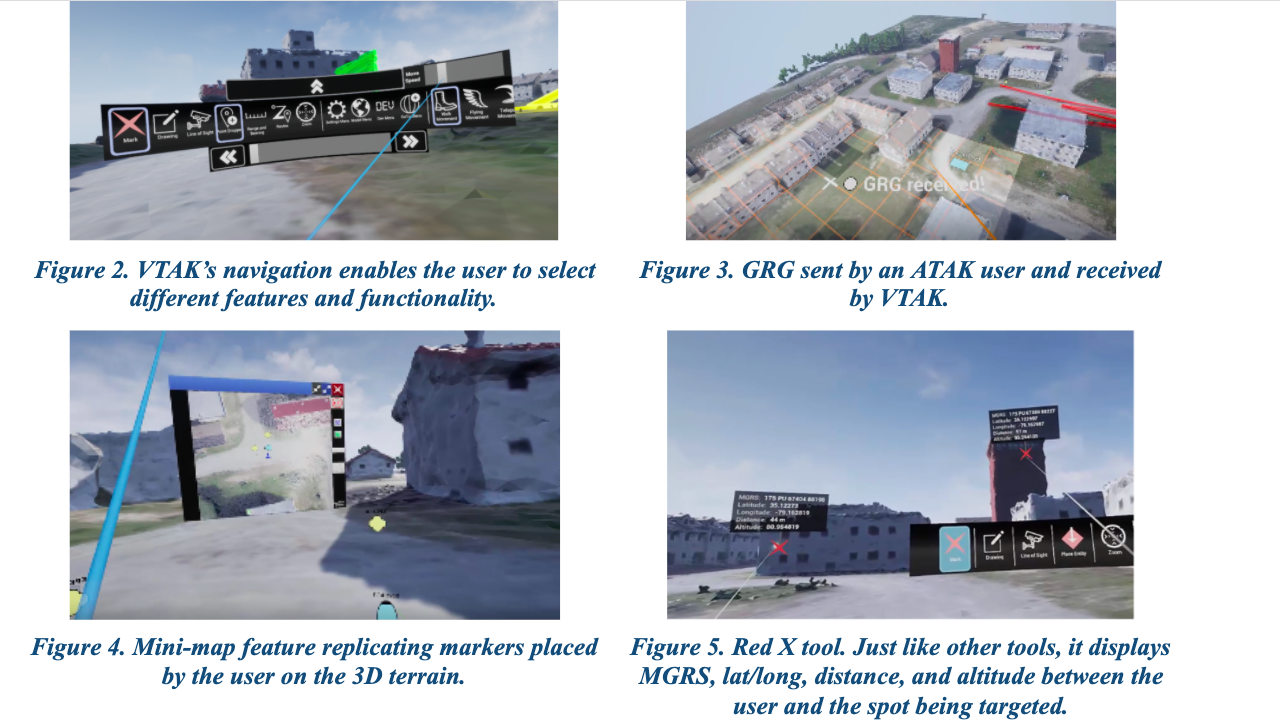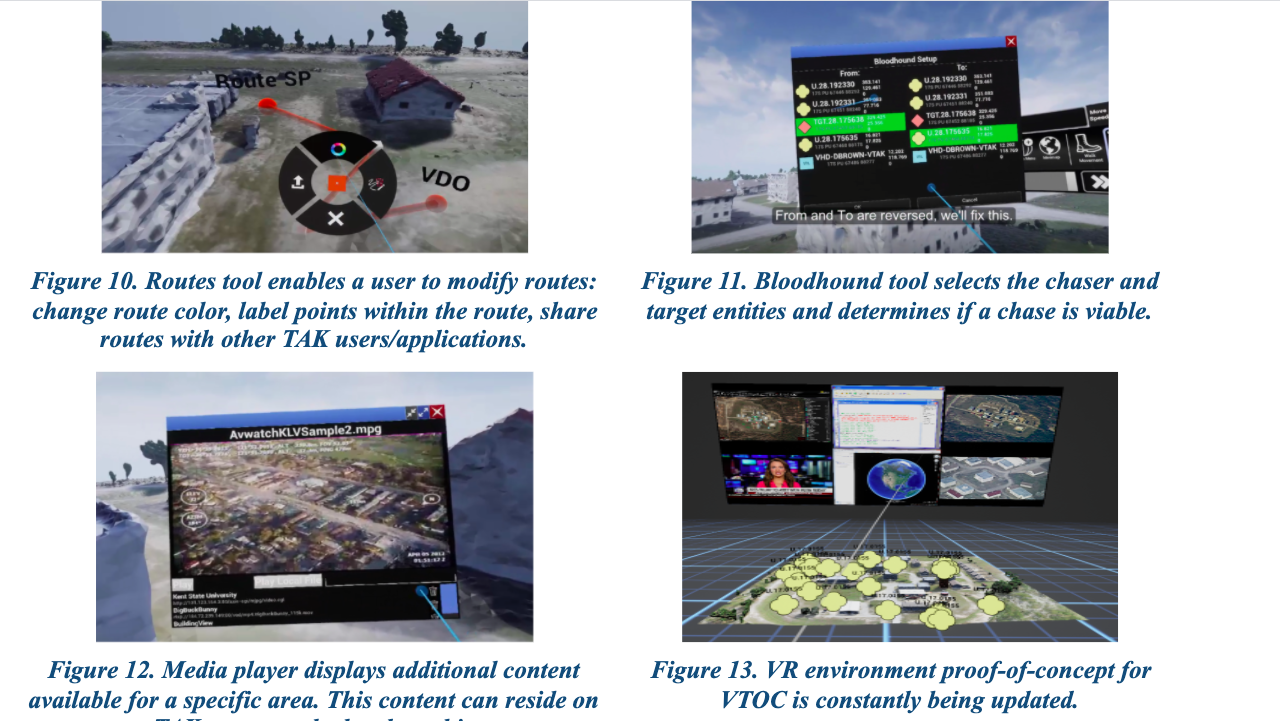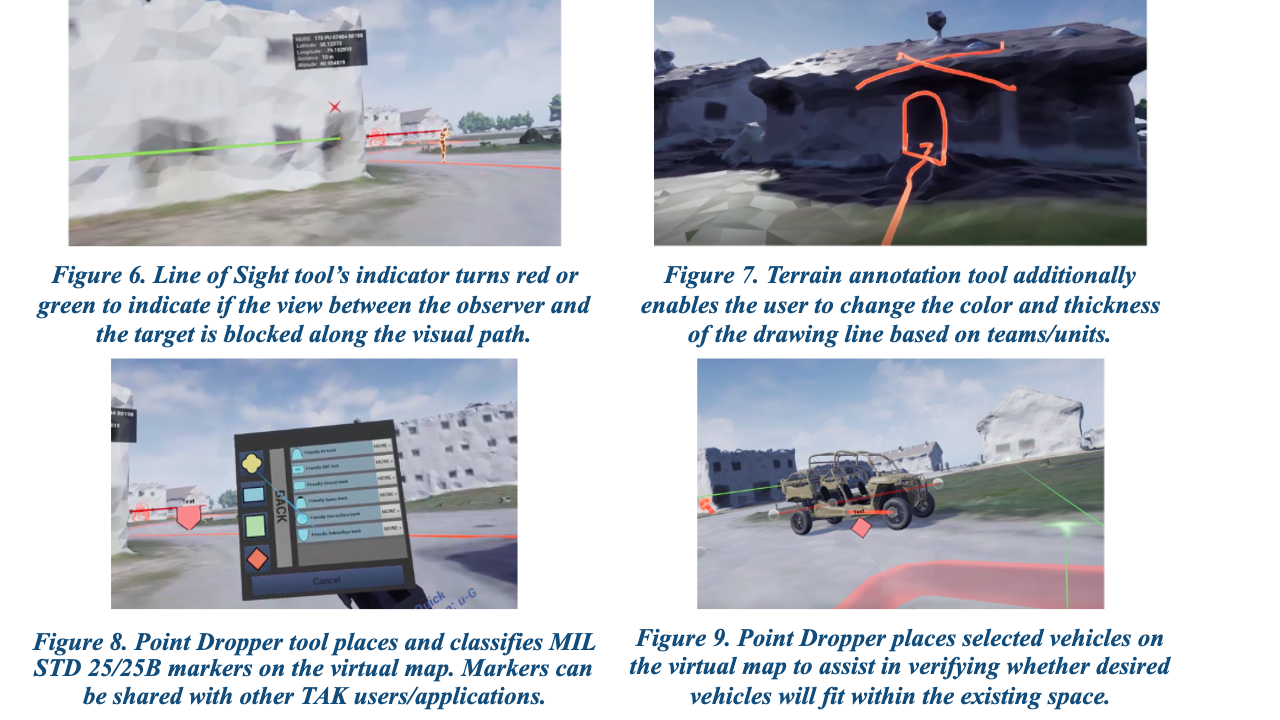Meet ARA in the Virtual Booth at our VR/AR Global Summit ONLINE Sept 30-Oct 2
Get tickets here!
Today’s military operators must train as they fight. New training solutions must interoperate with existing deployed solutions, to ease the learning curve for Soldiers in the field. To meet this need, Applied Research Associates (ARA) is developing the Virtual Tactical Assault Kit (VTAK), an innovative Virtual Reality (VR) tool for improved mission planning and rehearsal and better situational awareness. VTAK is integrated with the 10,000+ strong Tactical Assault Kit (TAK) ecosystem in use today.
VTAK began its life in early 2019. To enhance training realism, the United States Special Operations Command (USSOCOM) sought to include full-motion video; Geographic Information Systems (GIS); and Command, Control, Communications, Computers, Intelligence, Surveillance and Reconnaissance (C4ISR) technologies. These capabilities needed to integrate into TAK, an integrated family of training products used in forward theaters of operation by U.S. warfighters. To bring this vision to life, the NGA Warfighter Support Office (WSO) awarded a contract to the serious games experts at ARA: Virtual Heroes Division. ARA/Virtual Heroes is building VTAK on the open source, license-free Unreal Engine 4 rendering technology, using the immersive virtual interface of a VR headset and controllers.
VTAK provides the same interface and functionality as standard Android (ATAK) and Windows (WinTAK) devices, while greatly expanding operators’ ability to interact with, collaborate, view, mark up, and perform mission planning and rehearsal in a fully 3D space. VTAK has back-end connectivity to TAK servers, allowing VTAK, ATAK, and WinTAK user collaboration to send and receive data packages containing mission planning information. For example, users can share planned routes, go/no-go zones, ground markers and imagery, and other features. As a situational awareness tool, VTAK users (likely in a forward-deployed tent) load available 3D terrain maps of areas of interest to gain a “boots-on the-ground” VR perspective and analyze aerial views for reconnaissance and location familiarization. VTAK users have the option of using a wide range of Government Off the Shelf (GOTS) VR platforms including HTC Vive, Vive Pro, Oculus Rift S, and Valve Index systems, among others. Users may annotate terrain and buildings, measure distances, fit (place and rotate) vehicles within the available area, and analyze lines of sight in a fully-immersive 3D environment.
Said ARA Vice President Randy Brown, “ARA Virtual Heroes Division is honored to develop this important addition to the TAK ecosystem of deployed soldier platforms. Our demonstrated capabilities in VR development are being applied and challenged to solve problems of the utmost importance in the DoD space. This technology has already been demonstrated to and experienced by a long list of thought leaders in the DoD, including the Secretary of the Army, the Under Secretary of Defense for Research and Engineering, the Futures Command Deputy Commander, many leaders in the NGA, including the Director for Ops, the WSO Director, and the WSO Director of Operations, and leaders in the ongoing IVAS program, including the IVAS PM under Soldier Lethality CFT and the IVAS Assistant PM.”
Randy concluded, “We will continue to leverage the significant power of virtual reality technology to rapidly accelerate soldiers’ abilities for mission planning and rehearsal and at the point of need.”
On the horizon for VTAK is development of the Virtual Tactical Operations Center (VTOC), which will enable military leaders to make important decisions pre-deployment, en route, or during deployment, without having to move and set up bulky TOC hardware. A laptop and VR headset will replace heavy monitors, computers, communication infrastructure, and other equipment. The TOC experience will be fully customizable, allowing the user to create and configure as many virtual media surfaces as necessary.
For more information on VTAK or other ARA programs and products, email Randy Brown at rbrown@ara.com






